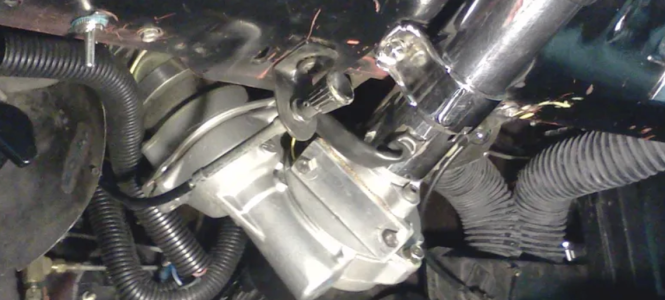I'm good with minimum, but it could be set anywhere in between with spacers.
Doing it electronically shouldn't be complicated; the cheap pwm driver I got from Oscar will run it. It has a knob.
Seems like the towncar has the features you want; I looked into it last year. There's a control on the dash,iirc.
Found it:
ariable effort steering 1996 lincoln town car
can anyone tell me the correct terminology to describe my power assist system components and where they are located?
i know the big ticket items like the steering gear, hydraulic pump, and all the linkage parts.
what i am not familiar with are the components in the system that control the hydraulic pressure and where they are located.
there is a low-high steering adjustment switch on the dash and i understand what its purpose is but i do not know were the other components are in the system that specifically vary the hydraulic pressure to change the effort required to turn the steering wheel (as i understand it) according to vehicle speed and the speed at which the steering wheel is turning.
Thats from here:
https://www.lincolnsonline.com/forum/showthread.php?t=84436
Their module is in the air ride module, from another post.
Seeing as it's possible, I'll see if I can build something.

 Literally, I actually deleted EVO entirely as I found it too aggressive with the 255s, high caster and SPR-ZM rack I’m using, plus I’m trying to rid my car of as much electronics as possible. I was just curious as to your plans.
Literally, I actually deleted EVO entirely as I found it too aggressive with the 255s, high caster and SPR-ZM rack I’m using, plus I’m trying to rid my car of as much electronics as possible. I was just curious as to your plans.